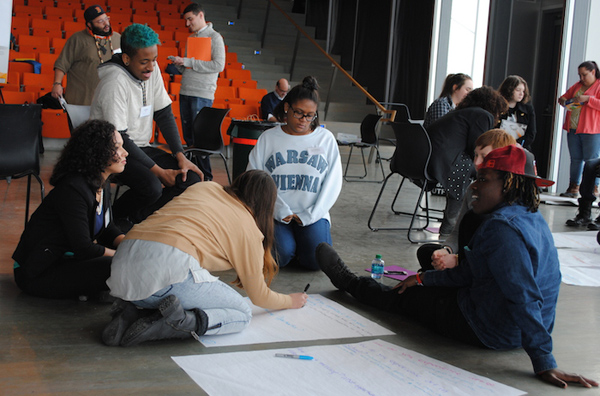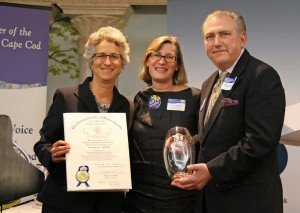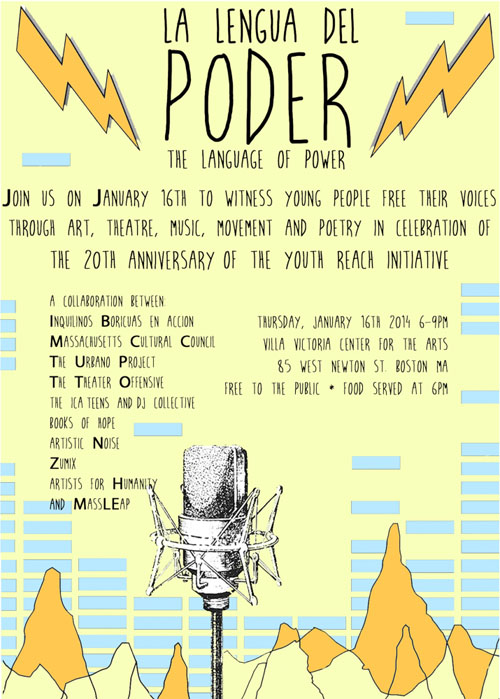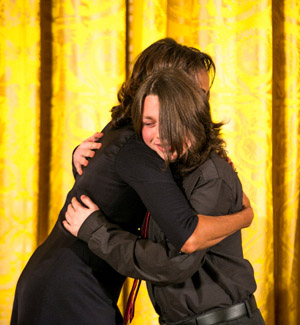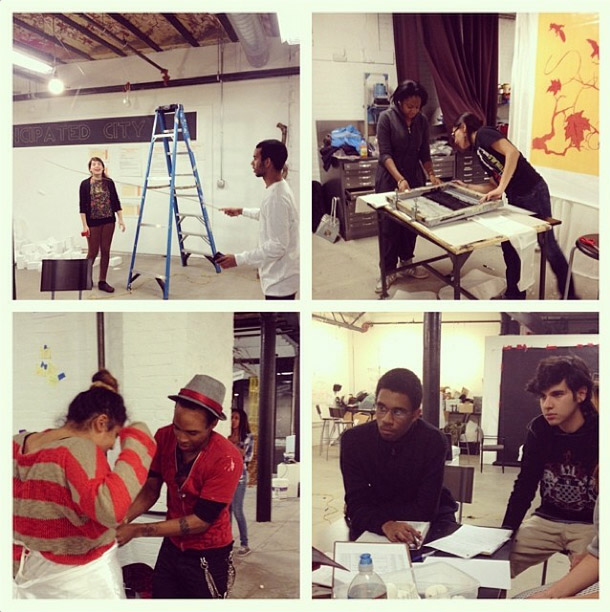Through their Youth Arts Action Initiative, MASSCreative partners with 18 youth arts groups to provide advocacy training and opportunities for participants to effect change in their communities. Their youth partners represent a broad spectrum of disciplines – from music, theatre, dance, and visual art – and come from diverse backgrounds representing communities around Greater Boston and beyond.
Young artists are already drawn to advocacy. All they need are the right tools to make the political case that arts matter. At MASSCreative, we’ve seen this advocacy firsthand.
In the last few months, the Youth Arts Action Coalition has convened three times, and began to steadily build an advocacy movement in Massachusetts fueled by young artists. In February, our partners came together at the Institute of Contemporary Art in Boston for a day of training and collaboration that would spark future advocacy. To kick off the day, Sara Stackhouse of Actors’ Shakespeare Project led an exercise that showed us how to tell our stories through the political organizing lens of the Marshall Ganz model. In this exercise, participants took time to understand their own role in the arts and cultural community by learning to tell three stories: ‘of self,’ ‘of us,’ and ‘of now’. Through this model, youth got the chance to tell their own story, connect to the values and interests of their peers, and inspire urgency in what we must do to make change happen.
This exercise revealed to us that tomorrow’s advocacy leaders were right there in the room. For our young artists who are so deeply involved in their own communities, envisioning themselves as part of an advocacy movement was the next logical step.
Next up, it was time to make waves at the State House. Our Youth Arts Action partners – now well-equipped to make their case – joined MASSCreative and 250 other arts advocates at #ArtsMatter Advocacy Day on March 25.
Among the crowd, young people stood out. They marched with pride and conviction in our #ArtsMatter march, turning heads and rallying the troops to make a difference at the State House. When we met with our legislators to talk about arts and cultural impact, it was their stories that helped drive home the message that arts aren’t just nice, but necessary. Their active participation in legislative meetings all over the State House was proof enough of this impact.
Later on, our youth partners took their advocacy a step further by doing what they do best: sharing their art. Youth leader Nick from Zumix took the mic and shared a rap about the impact of arts and culture in their own lives.
With heads nodding along in the audience, Nick made his point clear. The arts matter. They matter in our classrooms, in our neighborhoods, in all spaces occupied by youth. And with a few bars, Nick says it all:
“World leaders are not that; Imagination rules.
So stop taking music and art out of our schools.
I don’t want to hear that it’s not important
You should forfeit that argument; we’re not standing dormant.”
Drew Esposito is a Program Associate at MASSCreative. MASSCreative is proud to collaborate with 18 Youth Arts Action partners: Actors’ Shakespeare Project, Artists for Humanity, Boston Arts Academy, Boston Children’s Chorus, Boston Youth Symphony Orchestra, Hyde Square Task Force, Inquilinos Boricuas en Acción, Institute of Contemporary Art, Massachusetts Cultural Council, The Mayor’s Youth Council of Boston, Raw Art Works, Sociedad Latina, Teen Empowerment, The Theater Offensive, The Urbano Project, Urbanity Dance, Walnut Hill School for the Arts, and ZUMIX.

